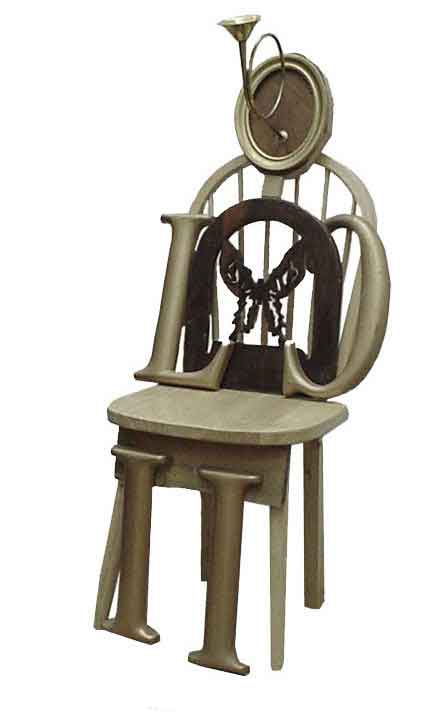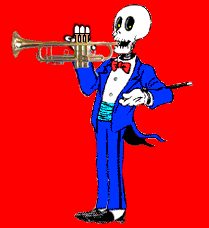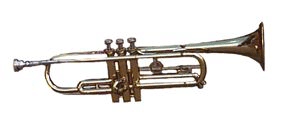| Back to Chris | Back to Bill |
|
A. Ursyn
Orchestra / Trumpet John
|
| Back to Chris | Back to Bill |

| On his way to the Philharmonic Hall, at 4:15 p.m., John, (who plays the trumpet) was approached by a sculptor Bill (who plays saxophone), and was asked to sit for him as a model for an outdoor sculpture to be placed in a city park. He said that Chris, a trumpeter as well had encouraged him to meet John. John and Chris know each other well; they are both fine artists. After some sessions, Bill designed a sculpture that was a double image of John and Chris playing their instruments. However, it was just the first of many troublesome steps that were necessary to get the statue done. First, it wasn’t easy to find a foundry that would complete a casting process at a reasonable price. Those deemed to be good in this profession were busy working on garden or cemetery monuments. At last Bill was allowed by a foundry owner to make a sculpture by himself. John donated his pan, which finally got ruined. "If the sculpture does not turn out good, you gave a pan for a bad cause," Chris was joking. John and Chris were asked to help in these chores. First, John prepared molds of the desired shape -- stiff castings made from plaster of Paris and formed impressions of his statue by pressing the wet plaster over parts of a statue and letting it harden. Having molds ready, he made a cast by pouring wax into it, then alternating stucco coverings with slurry, After that, he poured bronze (an alloy of copper and tin, with small amounts of aluminum or silicon) into a mold and leaving it to solidify so that it took on the mold’s shape. There was a lot of work with finishing, polishing and applying patina on the statue to give it a yellowish-brown sheen and the weathered color (patina) of bronze. Chris complained about his hands, which became even worse than after his painting sessions, so they looked quite awful by the philharmonic scene. He was asked to play for a ballet for a while. |


Some famous orchestra pieces that contain
important trumpet parts are:
Haydn: Trumpet Concerto
Rossini: William Tell Overture
Brian Amsutz - animation